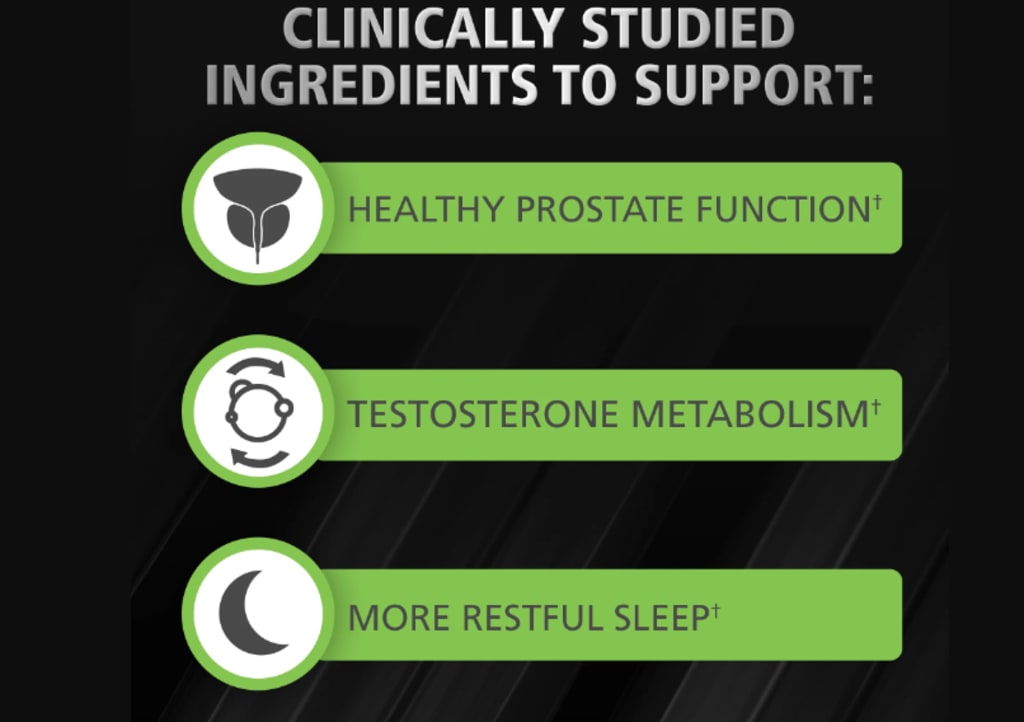How to maintain a healthy prostate?
What is the 5 second exercise to shrink the prostate?

# How to Maintain a Healthy Prostate: A Comprehensive Guide
Maintaining a healthy prostate is essential for overall well-being, especially as men age. The prostate is a small gland located below the bladder, responsible for producing seminal fluid. While it's often overlooked, prostate health can significantly impact quality of life. Here’s a detailed guide to keeping your prostate in top shape.
## 1. **Balanced Diet: The Foundation of Prostate Health**
### Nutrient-Rich Foods:
- **Fruits and Vegetables**: Packed with antioxidants and anti-inflammatory compounds, fruits and vegetables are crucial. Focus on tomatoes (rich in lycopene), broccoli, and berries.
- **Healthy Fats**: Incorporate sources of omega-3 fatty acids such as fish, flaxseeds, and walnuts. These help reduce inflammation and promote overall health.
- **Whole Grains**: Foods like oats, brown rice, and whole-grain bread support a healthy digestive system, which indirectly benefits prostate health.
### Foods to Limit:
- **Red and Processed Meats**: High consumption of these can increase the risk of prostate issues. Opt for lean proteins like chicken or plant-based alternatives.
- **Dairy**: Some studies suggest that excessive dairy intake might be linked to prostate problems. Moderation is key.
- **Sugary and Processed Foods**: These can lead to weight gain and other health issues that stress the prostate.
## 2. **Stay Hydrated: The Power of Water**
Drinking plenty of water is essential. It helps flush out toxins and supports kidney function, which indirectly aids the prostate. Aim for at least 8 glasses a day, adjusting based on activity level and climate.
## 3. **Regular Exercise: Keep Moving**
### Benefits:
- **Weight Management**: Maintaining a healthy weight reduces the risk of developing prostate issues.
- **Improved Circulation**: Exercise enhances blood flow, which is beneficial for prostate health.
- **Stress Reduction**: Physical activity helps manage stress, which can impact hormone levels and prostate health.
### Types of Exercise:
- **Cardio**: Activities like walking, running, or cycling are excellent for overall health.
- **Strength Training**: Building muscle mass through resistance exercises supports metabolic health.
- **Pelvic Floor Exercises**: Kegel exercises strengthen the muscles around the prostate and bladder.
## 4. **Regular Screenings: Proactive Health Monitoring**
### Age-Specific Guidelines:
- **Men aged 50 and older**: Regular prostate screenings are recommended. These can include a PSA (prostate-specific antigen) test and a digital rectal exam (DRE).
- **Men with a family history of prostate issues or of African American descent**: Start screenings earlier, around age 40-45, as they are at higher risk.
### Types of Screenings:
- **PSA Test**: Measures the level of PSA in the blood, with higher levels indicating potential issues.
- **Digital Rectal Exam (DRE)**: Allows the doctor to feel the prostate for abnormalities.
## 5. **Healthy Habits: Beyond Diet and Exercise**
### Manage Stress:
- **Relaxation Techniques**: Practices like meditation, deep breathing, and yoga can help manage stress levels.
- **Adequate Sleep**: Ensure you get 7-9 hours of quality sleep each night.
### Avoid Risk Factors:
- **Limit Alcohol**: Excessive drinking can harm overall health, including the prostate.
- **Quit Smoking**: Smoking is linked to various health issues, including increased prostate cancer risk.
## 6. **Supplements and Medications: Use with Caution**
### Consult Healthcare Providers:
- **Supplements**: Some supplements claim to support prostate health, such as saw palmetto, zinc, and vitamin D. Always consult with a healthcare provider before starting any supplement.
- **Medications**: If you have existing prostate issues, medications might be necessary. Follow your doctor’s advice and ensure regular check-ups.
## 7. **Stay Informed: Education and Awareness**
### Knowledge is Power:
- **Research**: Stay updated on the latest studies and recommendations regarding prostate health.
- **Discussion**: Don’t hesitate to discuss prostate health with your healthcare provider or join support groups.
## Conclusion
Maintaining a healthy prostate involves a holistic approach that combines diet, exercise, regular screenings, and a proactive lifestyle. By integrating these practices into your daily routine, you can support not just your prostate, but your overall health and well-being. Remember, it’s never too early or too late to start taking care of your prostate. Stay informed, stay proactive, and consult with healthcare professionals to tailor a plan that works best for you.
---
# The 5-Second Exercise to Shrink the Prostate: Can It Really Help?
Prostate health is a significant concern for many men, especially as they age. With conditions like benign prostatic hyperplasia (BPH) and prostatitis being common, finding simple and effective methods to support prostate health is crucial. Recently, there's been buzz about a "5-second exercise" touted as a quick and easy way to shrink the prostate and improve its function. But what exactly is this exercise, and can it truly make a difference?
## Understanding the 5-Second Exercise
The 5-second exercise often referred to in discussions about prostate health, is essentially a form of pelvic floor exercise, commonly known as Kegels. While Kegels are typically associated with women's health, they are equally beneficial for men, particularly in managing and improving prostate issues.
### What Are Kegel Exercises?
Kegel exercises involve contracting and relaxing the pelvic floor muscles, which support the bladder, bowel, and for men, the prostate. Strengthening these muscles can help control urinary function and support prostate health.
### How to Perform the 5-Second Kegel Exercise
1. **Identify the Muscles**: Before you start, it’s crucial to locate your pelvic floor muscles. One way to do this is to try stopping the flow of urine midstream. The muscles you use to do this are your pelvic floor muscles.
2. **Get Comfortable**: You can perform Kegels in any position, but it might be easier to start lying down or sitting comfortably.
3. **Contract and Hold**: Tighten your pelvic floor muscles and hold the contraction for 5 seconds.
4. **Release and Relax**: Relax the muscles completely for another 5 seconds.
5. **Repeat**: Aim for 10 repetitions per session. As your muscles get stronger, you can increase the hold and relaxation time, gradually working up to holding for 10 seconds each.
For best results, try to perform these exercises 3 times a day.
## Benefits of Kegel Exercises for Prostate Health
### Improved Urinary Control
Kegel exercises can significantly improve urinary control. This is particularly beneficial for men experiencing frequent urination, a common symptom of an enlarged prostate (BPH).
### Support for Prostate Function
Strengthening the pelvic floor muscles helps support the prostate gland and can alleviate some of the pressure caused by an enlarged prostate, potentially reducing discomfort and improving function.
### Enhanced Sexual Health
Regular Kegel exercises can also enhance sexual health. They help improve blood flow to the pelvic region and can contribute to better erectile function and overall sexual satisfaction.
### Non-Invasive and Easy to Do
One of the biggest advantages of Kegel exercises is that they are non-invasive and can be done anywhere without the need for special equipment. This makes them a convenient addition to your daily routine.
## Can Kegel Exercises Really Shrink the Prostate?
While Kegel exercises are effective in strengthening the pelvic floor muscles and improving symptoms related to prostate issues, there is no direct evidence that they can shrink the prostate gland itself. Instead, they work by alleviating symptoms and supporting overall prostate function.
For men with BPH or other prostate conditions, Kegels can be a valuable part of a broader management strategy that includes a healthy diet, regular exercise, and medical treatments as needed.
## Tips for Effective Kegel Exercises
1. **Stay Consistent**: Like any exercise, consistency is key. Incorporate Kegels into your daily routine for the best results.
2. **Don’t Overdo It**: Avoid doing too many repetitions at once, which can lead to muscle fatigue and soreness.
3. **Combine with Other Healthy Habits**: Support your prostate health with a balanced diet, regular physical activity, and staying hydrated.
4. **Consult Your Doctor**: If you’re unsure about how to perform Kegel exercises or if they’re right for you, consult your healthcare provider for guidance.
## Conclusion
The 5-second Kegel exercise is a simple yet effective way to support prostate health and manage symptoms related to prostate enlargement. While it may not directly shrink the prostate, strengthening the pelvic floor muscles can lead to improved urinary control, better sexual function, and overall enhanced quality of life.
Incorporate Kegels into your daily routine and combine them with other healthy habits for comprehensive prostate care. As always, consult with your healthcare provider to tailor the best approach for your individual needs.Gorilla Flow Reviews
Feel free to share your experiences or ask questions in the comments below. Let’s take proactive steps towards better prostate health together!
---
About the Creator
peter
Content about cars, motorbikes, technology, news
Enjoyed the story? Support the Creator.
Subscribe for free to receive all their stories in your feed. You could also pledge your support or give them a one-off tip, letting them know you appreciate their work.






Comments
There are no comments for this story
Be the first to respond and start the conversation.